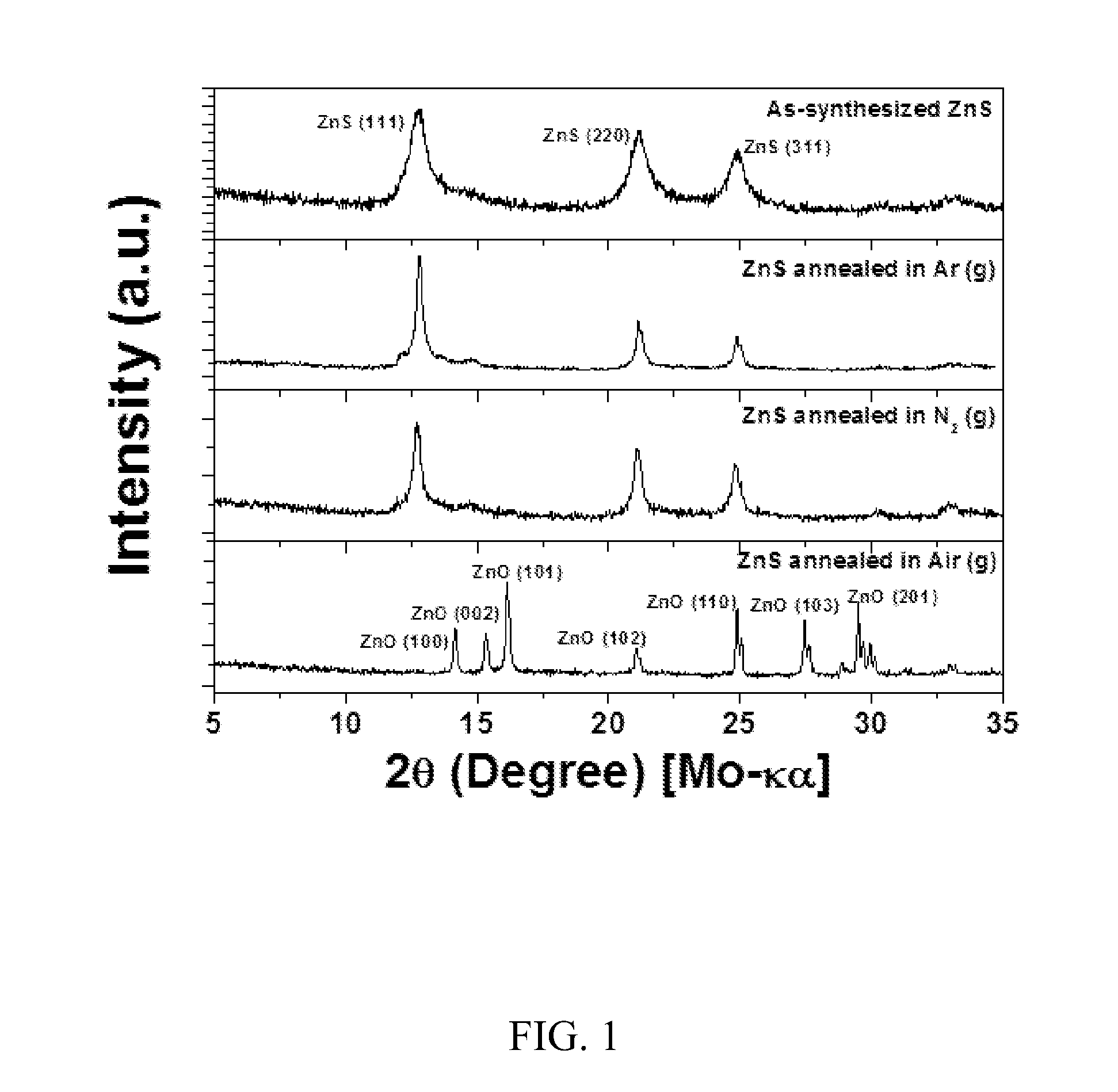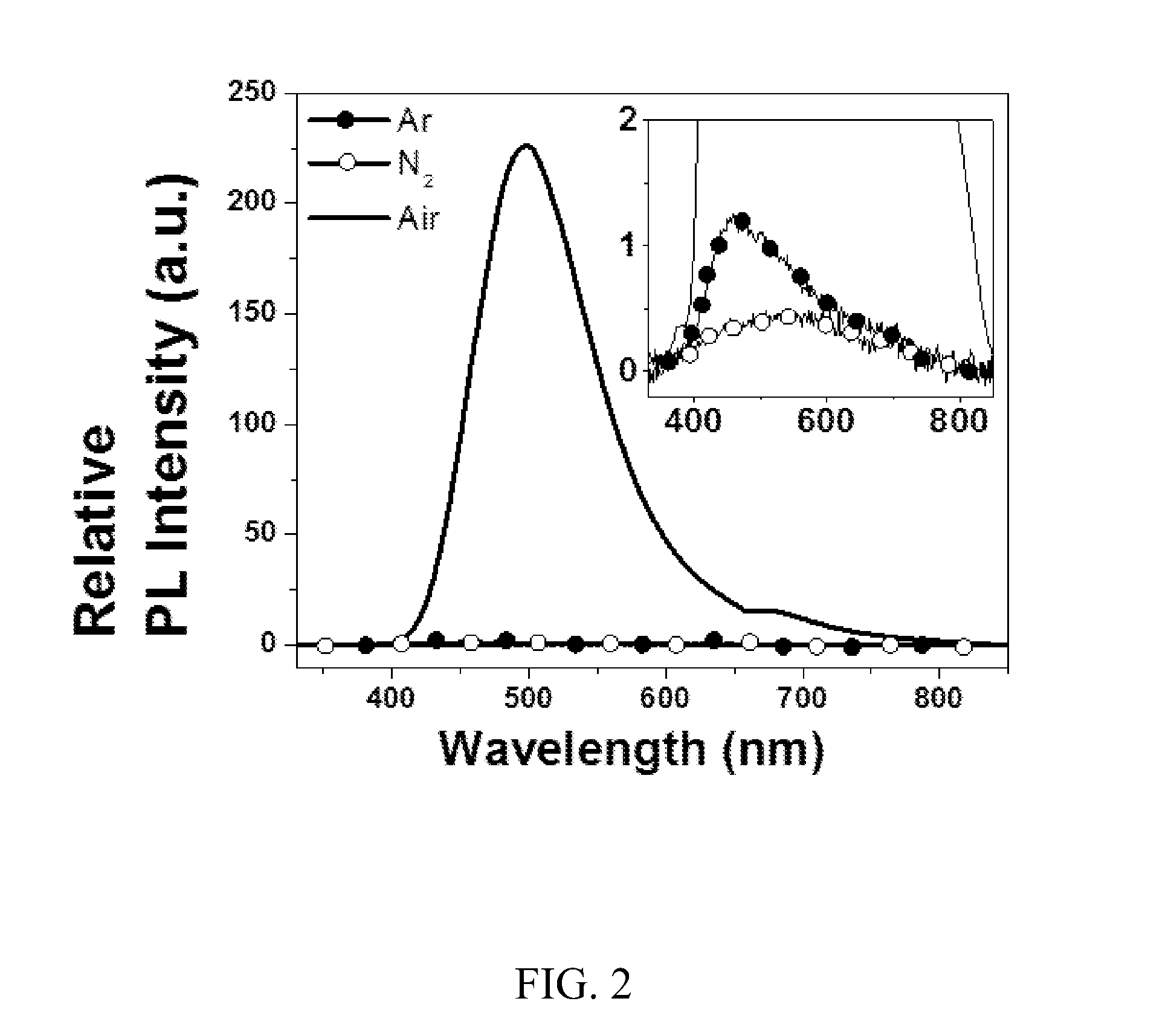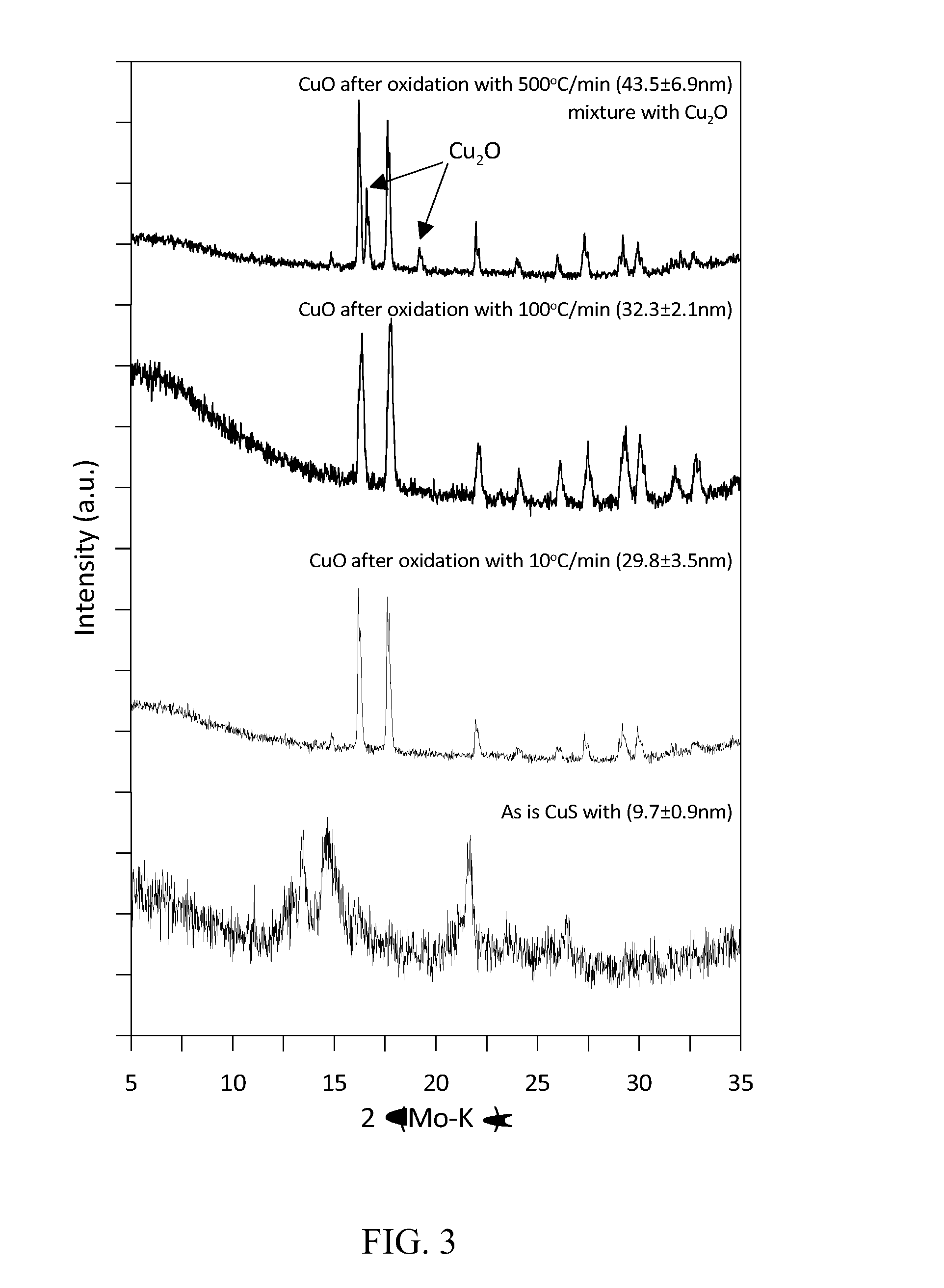Method for synthesizing metal oxide particles
- Summary
- Abstract
- Description
- Claims
- Application Information
AI Technical Summary
Benefits of technology
Problems solved by technology
Method used
Image
Examples
example 1
Preparation of ZnO Nanoparticles
[0142]ZnS nanocrystals were synthesized by a nanofermentation technique employing Thermoanaerobacter microbes. The ZnS nanocrystals with the tailored size in the scalable process can be thermally oxidized to ZnO nanocrystals with a slight increase in the average crystallite size (ACS). The thermal treatment of the microbially-produced ZnS nanocrystal was investigated under the following atmospheres: argon gas (Ar (g), 99.999%), nitrogen gas (N2 (g), 99.999%), and air. ZnS powder was placed in an alumina crucible, loaded into a tube furnace, and then annealed at 600° C. with a dwelling time of 2 hours and a ramping rate of 10° C. / min under each atmosphere.
[0143]FIG. 1 shows the XRD patterns of the as-synthesized ZnS nanocrystals and the nanocrystals annealed in the different gases. The results of the XRD analysis of the as-synthesized ZnS indicate the diffraction crystal planes of (111), (220) and (311) in the zinc blend crystal structure with an ACS o...
example 2
Preparation of CuO and SnO2 Nanoparticles
[0145]CuS and SnS precursors were microbially produced according to the process described in U.S. Patent Application Publication Nos. 2010 / 0330367 and 2010 / 0193752, the contents of which are herein incorporated by reference in their entirety. In brief, a fermentation medium that included a nutritive electron donor (e.g. glucose), thiosulfate, and thermophilic bacteria was incubated at 65° C., and then metal salts were dosed therein to produce the CuS and SnS nanoparticles. As found by X-ray diffraction analysis, as provided by the XRD patterns in FIGS. 3 and 4, the CuS and SnS precursor nanoparticles possessed an average crystallize size of 9.7±0.9 nm and 4.3±0.3 nm, respectively. The CuS and SnS precursor samples were annealed by gradually increasing the temperature to a final temperature of 800° C. in an air environment, wherein the final temperature was reached at different temperature ramping rates. For the case of CuO nanoparticles, a te...
PUM
 Login to View More
Login to View More Abstract
Description
Claims
Application Information
 Login to View More
Login to View More - R&D
- Intellectual Property
- Life Sciences
- Materials
- Tech Scout
- Unparalleled Data Quality
- Higher Quality Content
- 60% Fewer Hallucinations
Browse by: Latest US Patents, China's latest patents, Technical Efficacy Thesaurus, Application Domain, Technology Topic, Popular Technical Reports.
© 2025 PatSnap. All rights reserved.Legal|Privacy policy|Modern Slavery Act Transparency Statement|Sitemap|About US| Contact US: help@patsnap.com



